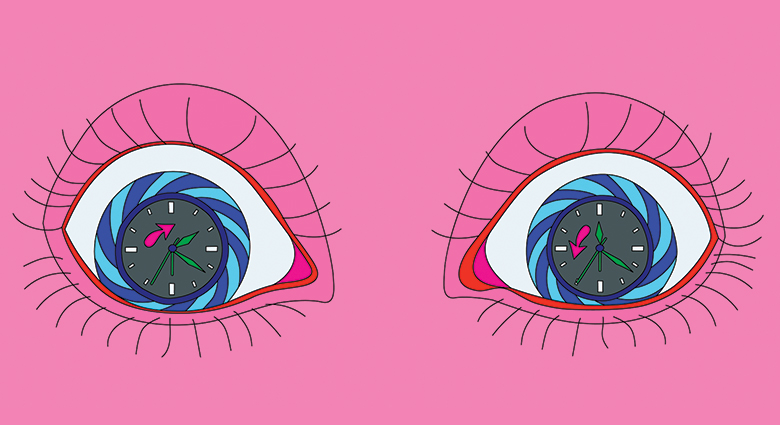
Twice a year, we shift the clock — an hour forward in the spring, an hour back in the fall — in a well-known practice known as daylight saving.
The premise is simple: shift the clocks so people can get the maximum amount of daylight. In the spring, the one-hour change means more daylight in the evening and darker mornings; in the fall, the sun sets earlier while mornings are lighter. But this transition can be more disruptive beyond just losing one hour of sleep. Whether you’re a parent (to humans or pets) or an early riser who hardly enjoys waking in the dark, you can make the transition into daylight saving a little less painful.
5 Tips to Adjust to Time Changes
- Go to bed and get up at the same time.
Get at least seven hours of sleep on the day(s) after the transition. Lack of sleep tells the body to store fat. While staying up later or changing your habits is tempting, it’s best to keep your bedtimes consistent. The closer you stick to your normal routine, the faster your body will adjust to the time change.
If you have a really tough time twice a year when the clocks change, start planning ahead. A few days in advance, gradually adjust sleep and wake times by shifting bedtime 15 to 20 minutes each night. This helps your body make gradual shifts and more slowly adjust.
- Practice good habits before bedtime.
In the days after the time change, quit caffeinated beverages 4 to 6 hours before bedtime. Avoid alcohol in the evening. If you are exercising, avoid workouts within 4 hours of bedtime because raising your body’s core temperature can make it harder to fall asleep.
If you know you have a tough time with time changes, you need to avoid electronics near bedtime, at least for a few days afterward. Electronics’ high-intensity light hinders melatonin, a hormone that triggers sleepiness. Light stimulates your brain and makes sleep difficult in the same way sunlight does. Also, turn off the television and pick up a book. Take a warm–not hot–shower. Dim the lights. Relax.
- Keep your dinnertime consistent. Eat more protein and less carbs.
On the days around the time change, eat at the same time or even eat a little early. To ease the transition, shift your mealtime forward 15 minutes for a few days in a row.
Our sleep cycle and our eating patterns affect each other. Don’t overeat. Also, if you find yourself feeling snacky, eat a snack that is high in protein instead of carbohydrates. (This might seem like good everyday advice, but it’s even more important during time changes.)
Try fruit with peanut butter or cheese with cracks. Go shop for fish, nuts, and other sources of protein for dinner this week! Avoid the pasta and carb-loaded snacks!
- Get more light!
Go outside and get exposure to morning sunlight on the Sunday after the time change to help regulate your internal clock. Having shorter daylight hours affects our mood and energy levels, decreasing serotonin. Make time to take a morning or early afternoon walk outside when the Sun is out. Try using a light therapy box or an alarm light that brightens as you wake up.
- Take a short cat nap.
Some folks may disagree, but if you’re starting to stack up sleepless hours, it’s safer and healthier for your body to give in to a short nap than to continue without sleep. Make it a short nap (no more than 20 minutes) to restore lost sleep hours; however, do NOT take long naps. It may help to go outside into the natural sunlight to cue your body and help retrain your inner clock.
Leave a Reply
You must be logged in to post a comment.